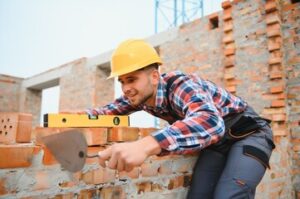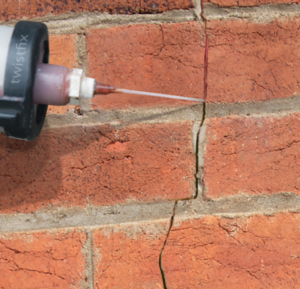Brick Mason Charleston SC builds walls, fireplaces, chimneys, and other structures using masonry materials such as brick, concrete block, and marble. They work to specific measurements and rigid specifications.

Strong problem-solving skills are essential for brick masons as they encounter construction challenges. They must be able to find solutions independently or collaborate with other construction professionals to ensure the project is completed on time and budget.
Brick masons must have physical stamina and strength to handle heavy materials and endure long hours of labor. They also must have excellent hand-eye coordination and dexterity to work with tools and precision. In addition, they must possess the ability to follow construction blueprints and plans, which requires a strong attention to detail. Masons should also be able to work well under pressure and meet strict project deadlines.
Those who pursue careers as masons typically need at least a high school diploma or GED certificate and complete a vocational training program. Some masonry programs are sponsored by union-management joint apprenticeship and training committees, while others are run by trade associations or technical schools. These programs typically last 3 to 4 years and involve on-the-job training, as well as classroom instruction in topics like blueprint reading, math for measurement, layout work, and sketching.
Once a mason has acquired the necessary skills and experience, they can pursue certification through organizations such as the National Center for Construction Education and Research or the Brick Industry Association. These credentials can help masons stand out among other candidates when applying for jobs or seeking higher wages.
Masons may also find employment in various sectors of the construction industry, depending on their preferences and skill sets. This can include commercial, industrial, and residential projects. As masons gain more experience and expertise, they can also take on supervisory roles and earn more money in their fields.
As with many other construction workers, the demand for masons varies based on economic conditions. When construction activity declines, many of these employees will likely face periods of unemployment. However, when construction activity rises, more masons will be needed to build and repair structures.
Mathematical Skills
Brick masons transform architectural designs into tangible structures that withstand the test of time. They use a combination of bricks, concrete blocks, and natural stone to build walls, fences, walkways, roads, and other construction projects. They also work on restoration projects for historic buildings or other structures, which requires a thorough understanding of traditional building techniques and materials.
Mathematical skills are important for brick masons to have, as they often interpret and translate blueprints and construction plans. They need to be able to accurately measure dimensions and determine the amount of bricks and mortar needed for each project. This allows them to construct structures that are aesthetically pleasing and functionally sound.
Brick masons must also be able to follow the blueprints and construction plans to ensure that their finished product is built according to specifications. This is why they need to have excellent attention to detail, as well as strong problem-solving skills.
Physical stamina is crucial for brick masons, as they are constantly lifting and moving heavy bricks and mortar throughout the day. They also need to have the strength to handle tools such as trowels, mason levels, and brick hammers. This helps them keep up with their work and maintain a steady pace during long shifts on the job site.
Brick masons typically learn their trade through apprenticeships and on the job training, working under experienced masons. They may also pursue educational programs that focus on masonry and construction techniques. In addition, they can obtain certifications from the National Center for Construction Education and Research (NCCER) and the Brick Industry Association that validate their knowledge and skills in the field. This can improve employment prospects and increase opportunities for career advancement.
Attention to Detail
Brick masons must be able to understand and interpret blueprints and construction plans accurately. They must also be able to visualize how bricks will fit together to create aesthetically pleasing and structurally sound structures. This requires attention to detail, as even a single misplaced brick can have an adverse effect on the final product.
Masons also need to be able to follow all safety protocols on a construction site, as they often work with potentially hazardous materials and equipment. They must pay close attention to the instructions of their employer and all other team members in order to ensure that they are working safely.
Lastly, masons need to be able to solve problems as they arise. Construction projects are rarely straightforward, and unexpected challenges may occur at any time. Expert masons are able to think on their feet and find creative solutions to these challenges, so they can continue working efficiently and effectively.
Masonry is a skilled trade, and it takes a lot of training and experience to master the craft. Hiring brick masons with the right skills and knowledge can help construction companies save time, money, and resources by ensuring that their projects are built correctly and to code. To attract the best candidates, it is important to include a detailed job description that clearly outlines all of the necessary qualifications for the position. This will make it easy for applicants to determine if they are a good fit for the job and will allow recruiters to identify qualified candidates quickly and easily. For more tips on hiring the best masons, check out this post from CareerBuilder.
Problem-Solving Skills
Brick masons need to be able to solve problems as they work. Building a structure is rarely straightforward and unexpected challenges can arise at any time. Hiring managers want to see if you are capable of thinking on your feet and devising creative solutions to overcome obstacles. They also want to know if you have experience working with complex and intricate projects.
For example, if you are working on a load-bearing masonry project, you need to understand how to distribute weight properly to ensure the structural integrity of the building. This requires you to have excellent math skills in order to accurately calculate dimensions and material requirements for each stage of construction. You may also need to create a schedule for materials and labor so that everything runs smoothly.
Other problem-solving skills that brick masons need include knowing how to mix mortar, which is a mixture of cement, sand, and water. Masons mix this material to the correct consistency so that it can bind bricks together and create a strong foundation.
When constructing a wall or other structure, you need to be familiar with different bonding patterns, such as running and Flemish, in order to achieve a seamless appearance. You must also be able to cut and shape bricks as needed, which can involve using chisels or saws to fit specific angles or openings.
You may also be responsible for repairing and restoring existing brick structures. This can involve removing and replacing damaged bricks, repointing mortar joints, and restoring the aesthetic of older buildings. Additionally, you may need to collaborate with other construction professionals such as architects and engineers. You need to be able to communicate effectively with these individuals in order to understand the design and specifications of each project. You must also be able to adhere to all safety protocols when working at heights or with heavy machinery.
Communication Skills
Brick masons must be able to communicate with other construction professionals and collaborate effectively. This requires excellent verbal and written communication skills. Masons also must be able to read blueprints and drawings and understand how to use tools correctly. This skill set is essential for effectively working with others on a construction project, especially in team environments where masons may work with engineers and architects to design structures.
Brick masons often work in physically demanding environments. They must be able to lift heavy materials and stand, kneel, or bend for long periods of time. They must also be able to perform their duties in extreme weather conditions, which can impact construction timelines. Masons must also be able to maintain a clean work area and adhere to all safety regulations.
Using their strong mathematical skills, masons must be able to accurately measure dimensions and determine the amount of bricks and mortar needed for a specific project. This is vital for ensuring that all necessary materials are available and that projects remain on schedule.
Masons must also be able to solve complex problems that arise on construction sites. These challenges can be due to unforeseen issues such as uneven surfaces or changes in building designs. Masons must be able to think on their feet and come up with innovative solutions to these problems. This is important to ensure that all aspects of the construction process are completed to the highest standards.
In addition to the aforementioned qualifications, brick masons should have strong leadership and supervisory skills in order to be effective in their jobs. They must be able to lead and manage teams of other masons, as well as oversee large-scale construction projects. Masons with these skills are highly sought after and well-compensated in the industry.

